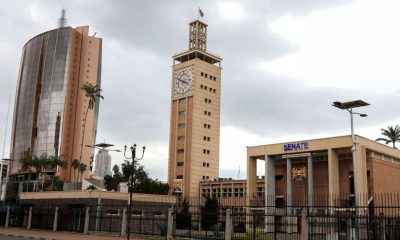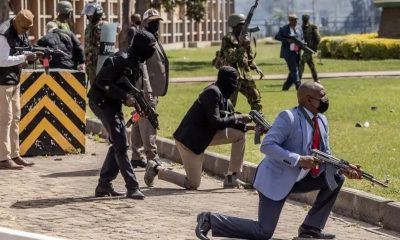News
BBC Investigation Links KDF Officers to Parliament Protest Shootings
The investigation, which runs for 37 minutes, is based on digital evidence showing the killing of dozens of youths.
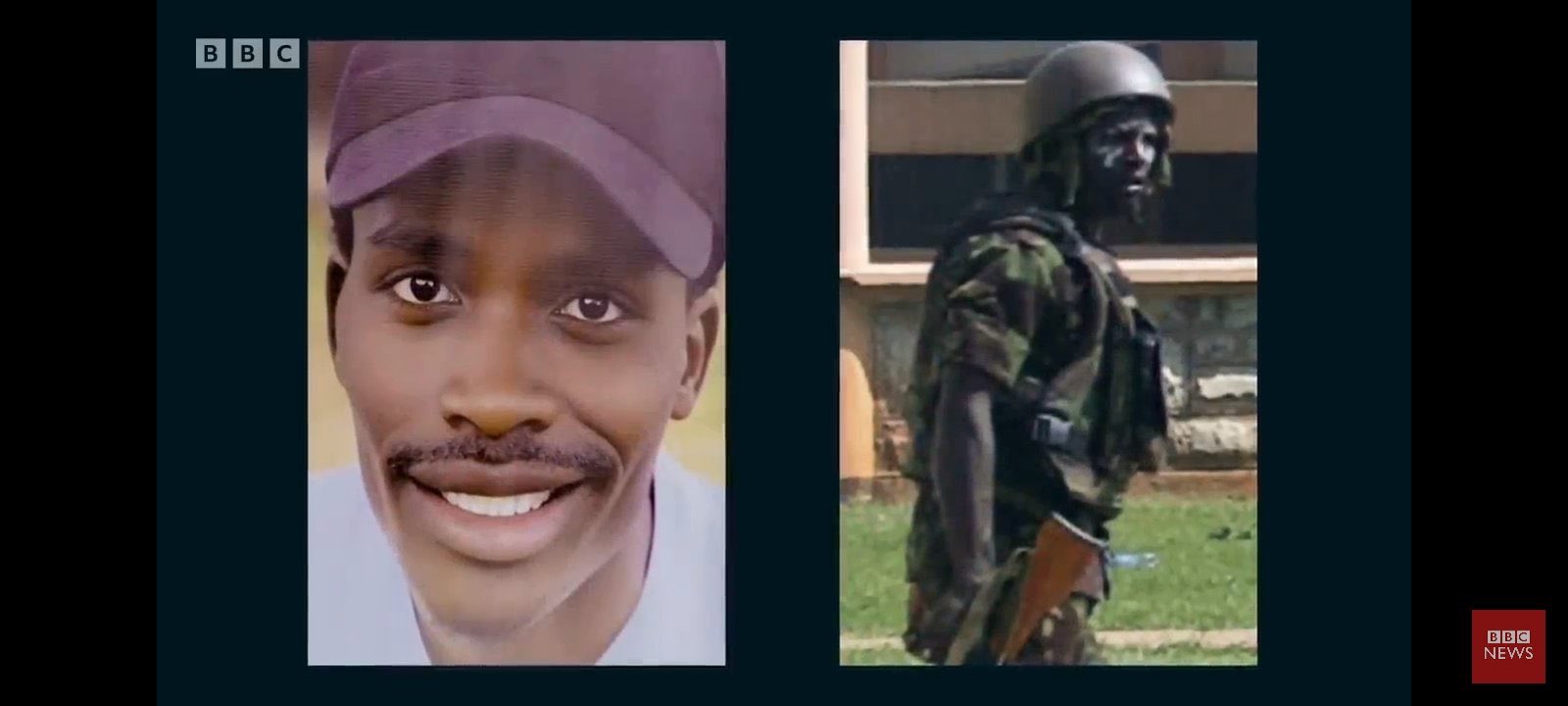
A new investigation by the BBC has linked Kenya Defence Forces (KDF) officers to acts of brutality during the anti-government protests on June 25 last year, where demonstrators stormed the Parliament Buildings.
Blood Parliament, the BBC documentary alleges that aside from police officers, there were other shooters, possibly drawn from KDF, particularly the Kenya Army, involved in the Gen Z protests.
The investigation, which runs for 37 minutes, is based on digital evidence showing the killing of dozens of youths.
One of the findings was that one shooter had a unique dress code, unlike the plainclothes police officers at the scene, raising doubts about whether he belonged to the police units.
“In the video of the officer shouting, ‘uaa!'(which means kill in English), the shooter’s back was to the camera. But the BBC compared his body armour, riot shield, and headgear with those of every police officer at the scene.
In his case, he had an upturned neck guard. We matched his distinctive uniform to an officer in a video recorded seconds later.
There, he made sure to hide his face before firing into the crowd. We do not know his name,” part of the BBC report stated.
It was also claimed that one of the shooters during the invasion of Parliament was linked to the Central Police Station in Nairobi.
However, when the BBC tried to trace the officer, the efforts failed, creating confusion about his actual station of assignment.
Efforts to get a comment from the National Police Service (NPS) and the police station where the officer was supposedly based were unsuccessful.
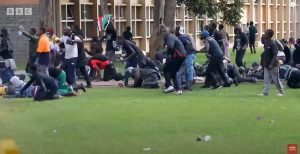
A BBC screengrab showing anti-government protestors accessing Parliament buildings on June 25, 2024.
The NPS said that only the Independent Policing Oversight Authority (IPOA) can investigate police misconduct, adding that it cannot probe its own officers.
Claims dismissed
At the same time, the Kenya Defence Forces dismissed claims that its officers participated in the shooting, stating that it remains a neutral and professional service.
On the evening of June 25, then Defence Cabinet Secretary Aden Duale announced the deployment of KDF officers to help police handle the unrest.
In a gazette notice, Duale said the decision came after some demonstrators targeted critical infrastructure, posing a threat to national security.
“Under Article 241 (3) (b) of the Constitution of Kenya as read with sections 31 (1) (a), 31 (1) (c), 33 (1), 34 (1) and 34 (2) of the Kenya Defence Forces Act, (Cap. 199), the Kenya Defence Forces is deployed on the 25th June, 2024 in support of the National Police Service,” read part of the gazette notice.
However, the deployment was announced after Parliament had already been invaded.
Following the week of protests, the Kenya National Commission on Human Rights (KNCHR) reported that 39 people had died and 361 others were injured in different parts of the country.
The protests were triggered by the controversial Finance Bill that aimed to raise Sh346 billion in taxes, and which was later withdrawn.
National Assembly Speaker Moses Wetang’ula later revealed that property worth Sh94 million was destroyed during the protests at Parliament.
He said an insurance company assessed the damage, adding, “That is the damage we suffered. So the insurance firm has taken up the matter.”
He further explained that when the protestors broke into Parliament Buildings on June 25, they vandalised furniture, damaged the structures, smashed television screens, and tore flags.
Wetang’ula assured that taxpayers would not bear the cost as the insurance company would handle the repairs and replacements.
During the chaos on June 25, protestors opposed to the Finance Bill 2024 managed to break through Parliament’s security barricades.
Earlier that day, the Bill had passed with 195 MPs voting in favour and 106 against.
As the protestors stormed Parliament, some were shot outside the building, while others set fire to a section housing parliamentary offices.
Gunfire could be heard as police officers struggled to control the crowd.
Several items were vandalised, including essential equipment used for parliamentary sessions, windows were smashed, and flags were destroyed.
Currently, only one police officer, linked to the Central Police Station, faces possible murder charges in connection with the killings.
His case was adjourned on March 10 after a key witness asked for more time to submit critical documents to the court.
The full extent of involvement by officers outside the police service remains unclear, even as human rights groups continue to demand accountability for the deaths and injuries recorded during the demonstrations.
Kenya Insights allows guest blogging, if you want to be published on Kenya’s most authoritative and accurate blog, have an expose, news TIPS, story angles, human interest stories, drop us an email on [email protected] or via Telegram
-

 News2 weeks ago
News2 weeks agoKenyan Driver Hospitalized After Dubai Assault for Rejecting Gay Advances, Passport Seized as Authorities Remain Silent
-

 Investigations6 days ago
Investigations6 days agoMoney Bior, Lawyer Stephen Ndeda Among 18 Accused Of Running An International Fraud Ring Involved With Scamming American Investor Sh500 Million
-

 Investigations5 days ago
Investigations5 days agoNestlé Accused of Risking Babies’ Health in Africa with ‘Toxic’ Cerelac Product Sold Highest in Kenya
-
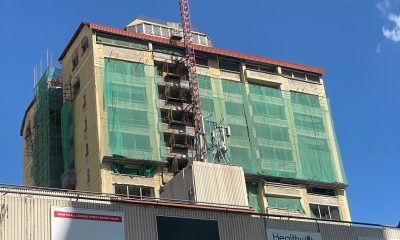
 Business2 weeks ago
Business2 weeks agoConstruction Of Stalled Yaya Center Block Resumes After More Than 3 Decades and The Concrete Story Behind It
-
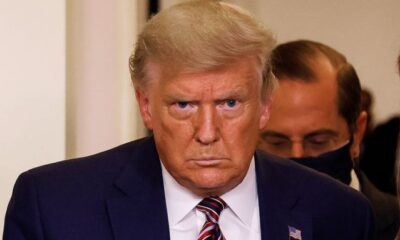
 Investigations2 weeks ago
Investigations2 weeks agoHow Somali Money From Minnesota Fraud Ended In Funding Nairobi Real Estate Boom, Al Shabaab Attracting Trump’s Wrath
-

 News1 week ago
News1 week agoTSC Announces Major Policy Shift To End Transfer Of Promoted Teachers
-

 News4 days ago
News4 days ago48-Year-Old Woman Who Pushed 25-Year-Old Boyfriend To Death From 14th Floor Kilimani Apartment Arrested
-

 Investigations5 days ago
Investigations5 days agoKDC Rocked With Fresh Sh500 Million Tender Scam

